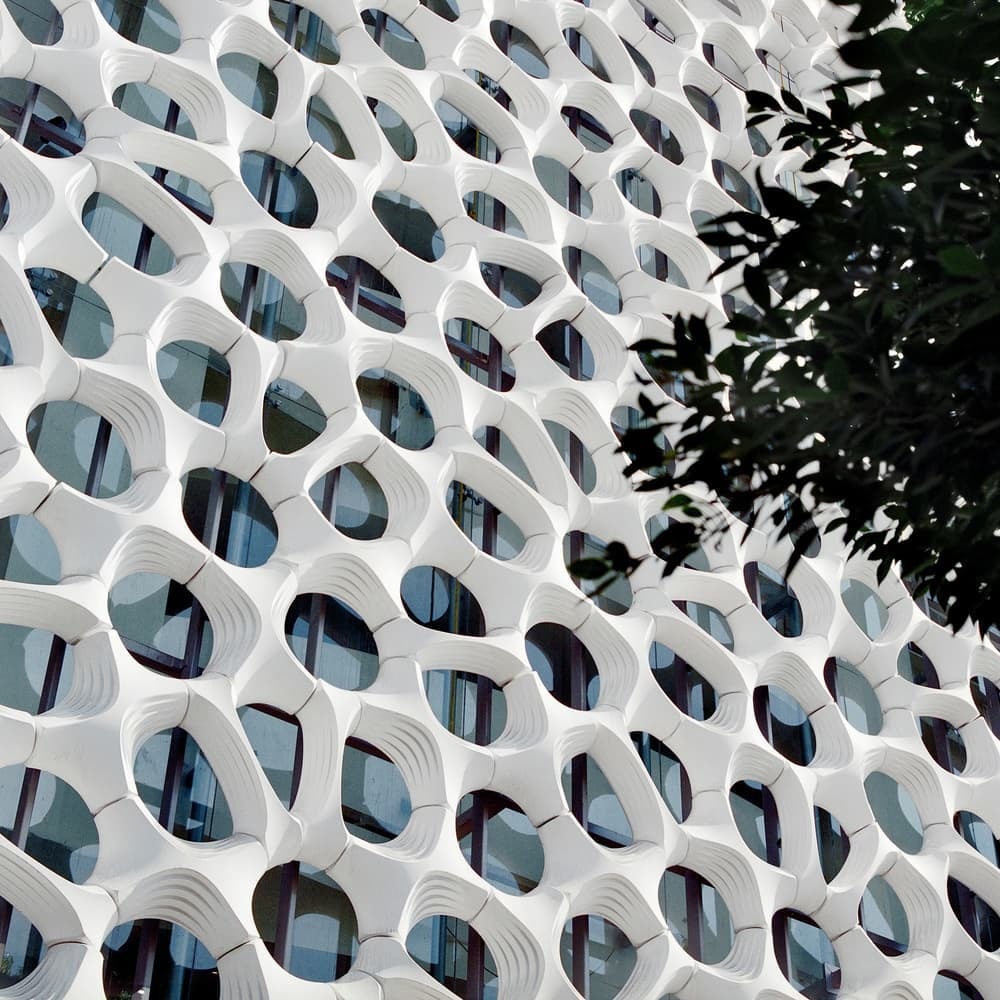The architecture of the future
The trend in the future will not only be the construction of low-energy buildings or less polluting the environment, but the buildings of the future will combat smog and get rid of nitrogen pollutants, and produce oxygen. Nitrogen dioxide produces oxygen.
Manuel Gea Hospital project in Mexico uses nanotechnology for titanium dioxide in facade cladding, and it is estimated that it gets rid of nitrogen pollutants resulting from the use of 1,000 cars per day.
KAZINFORM Locals in Mexico City do not only appreciate the Manuel Gea González Hospital for its beauty – but they are also indebted to its designers for its ability to help purify the air in one of the most polluted towns on earth. Designed by Berlin-based Elegant Embellishments, the 2,500-square-meter facade is constructed from ‘Prosolve‘ modules. These are coated with a special pigment that, when hit by ambient ultraviolet light, reacts with urban air pollutants, breaking them down into less noxious compounds like carbon dioxide and water. The pigment itself remains unchanged, which means the modules can keep purifying the air for up to a decade, or until their coating wears off. As Allan Dring of Elegant Embellishments, explained, the individual, day-to-day benefits for those living or working near the building are potentially huge: “With technology like ours, the great thing is that you put a Pro solve facade somewhere and it may not lower the macro levels of air pollution for a place like Mexico City right away, but what it can do is have a direct and local effect on the ground. So you can have improved health of the people that work there, or the people that walk by it every day,” Dring said.
The most polluted city on the planet.” With an estimated 35,000 hospitalizations ascribed to dirty air per year, Mexico City had become “Mexico City.” Thus the completion of Berlin-based design studio Elegant Embellishments’ sculptural, bad-air-busting façade across the city’s Manuel Gea Gonzalez Hospital next month cannot come fast enough.
As part of a two-decade-long effort to clean up the megacity, the Erwin Hauer-Esque screen covers 2,500 square meters (26,900 square feet) and runs 100 meters (328 feet) long. The façade comprises Elegant Embellishments’ white Pro solve 370e tiles—three-dimensional X- and I-shaped modules that attach to a steel substructure. Each lightweight, thermoformed plastic tile is coated with powdered, photocatalytic, air-scrubbing titanium dioxide (TiO2), a nanomaterial patented by Millennium Chem (now Cristal Global) in 2002.
Elegant Embellishments co-directors Allison Dring and Daniel Schwaag ran with Millennium’s innovation to create sculptural tiles that would not only serve as, well, an elegant embellishment, but also maximize surface area, direct natural light into the building, and slow wind flow to generate turbulence that distributes air pollutants better across the tiles’ surface. A smart ornament? Take that, Adolf Loos.
The tiles’ irregular and biomimetic pattern derives from a quasicrystalline, or Penrose, grid-based on sponges and corals. The forms were drawn first in 2D CAD programs and then modeled in Rhino. Despite their visual complexity, they are assembled using standard directional tiling rules and mounted to a vertical grid. The first prints, created in 2006, were stereolithography (SLAs) that the studio hand-cast in polyurethane.









